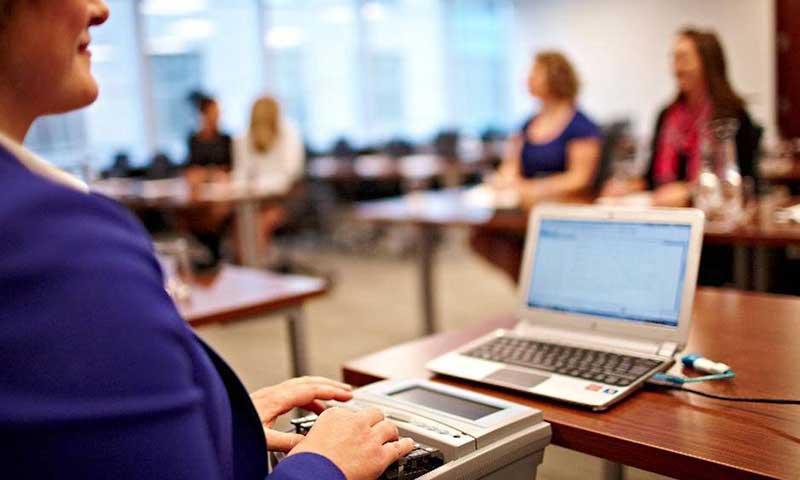Astound the Jury: Vital Components of a Powerful Trial Discussion
In the world of legal campaigning for, the ability to astound a jury is extremely important to the end result of a trial (trial presentation). Important aspects such as understanding the target market, crafting a compelling story, and grasping verbal and non-verbal communication are vital elements of an efficient presentation. The tactical usage of visual help can substantially enhance understanding and retention of vital disagreements. As these elements intertwine, they create a cohesive technique that not only educates yet additionally engages jurors on several degrees. What details methods can genuinely change a standard discussion into a remarkable experience for the court?

Recognizing Your Audience
Understanding your target market is an essential facet of effective test discussion. An effective presentation rests on the capacity to realize the demographics, values, and tendencies of jurors. This understanding educates how disagreements are mounted, evidence exists, and sob stories are crafted, guaranteeing that the message reverberates with the jurors on an individual level.
Research study indicates that jurors originated from varied histories and may have differing levels of recognizing relating to lawful process (trial presentation). Therefore, it is crucial to prevent legal jargon that could estrange or confuse them. Rather, employing clear, relatable language fosters interaction and understanding. Additionally, recognizing the jurors' potential prejudices and life experiences permits the trial speaker to expect arguments and address concerns proactively.
Reliable trial presentation also includes observing jurors' reactions throughout the process. Involving with jurors as individuals rather than a cumulative unit is important in cultivating a strong connection in the court room.

Crafting a Compelling Narrative
Crafting an engaging narrative is vital in leading jurors with the intricacies of an instance. A well-structured narrative not just streamlines intricate lawful principles however likewise engages jurors on an emotional degree, making the information a lot more relatable and memorable.
To accomplish this, attorneys ought to start by identifying the core message they wish to communicate. This message should resonate with the jurors' worths and experiences, fostering a link that goes beyond mere truths. The story should unfold rationally, presenting events in a clear sequence to stay clear of complication. This sequential technique can help jurors follow the development of occasions, highlighting cause and result.
Integrating human aspects-- such as individual tales or anecdotes-- can better boost the narrative's influence. These components stimulate empathy, permitting jurors to visualize the effects of the case on actual lives. Furthermore, utilizing a constant motif throughout the presentation strengthens the primary disagreement, making it simpler for jurors to retain essential factors.
Ultimately, an engaging story changes a test presentation from a plain recitation of facts into a persuasive tale that captivates the jury, urging them to ponder with both reason and feeling.
Making Use Of Aesthetic Aids
Incorporating aesthetic aids into a test presentation can considerably boost jurors' understanding and retention of information. Visual materials such as charts, representations, photographs, and video clips can transform intricate lawful concepts and proof right into easily digestible layouts. By involving multiple senses, these aids permit jurors to envision the situation's crucial aspects, making it less complicated for them to follow along and grasp complex details.
In addition, properly designed visual help can stress essential factors and emphasize relationships between different items of proof. As an example, timelines can successfully show the series of occasions, while annotated pictures can make clear particular information appropriate to the instance. This not just aids in understanding but also strengthens the narrative presented by the attorney.
Excessively intricate or cluttered visuals might bewilder jurors and detract from the message. Inevitably, efficient visual communication can be a powerful device in persuading jurors and aiding them get to educated conclusions.
Grasping Verbal Interaction
Efficient spoken communication is vital in a trial presentation, straight from the source as it acts as the primary means whereby lawyers convey their arguments and connect with jurors. Grasping this ability includes clarity, persuasion, and involvement. Attorneys need to verbalize their points clearly and briefly, preventing legal lingo that may confuse jurors. Simplicity in language promotes understanding and aids jurors comprehend complex concerns presented throughout the trial.
In addition, tone and pacing significantly effect exactly my link how messages are gotten. A certain tone communicates authority, while ideal pacing allows jurors to absorb info without feeling overwhelmed. Attorneys must likewise vary their singing inflections to highlight bottom lines and keep jurors' passion throughout the presentation.
Additionally, the company of verbal disagreements is vital. Structuring the narrative practically and coherently helps jurors follow the lawyer's logic, making it less complicated for them to retain critical info. Making use of convincing strategies, such as narration, can likewise boost the emotional resonance of the debates provided, thus developing an extra extensive connection with jurors.
Eventually, mastering verbal communication not only enhances an attorney's situation however additionally cultivates trust fund and rapport with the court, substantially boosting the possibilities of a favorable decision.

Engaging With Body Movement
Nonverbal communication plays an important function in test discussions, typically sharing messages that words alone can not reveal. Body movement, encompassing gestures, pose, facial expressions, and eye contact, dramatically affects just how jurors perceive the credibility and genuineness of the presenter. A confident stance, with shoulders back and an open pose, can instill trust, while closed-off body movement may suggest defensiveness or uncertainty.

Facial expressions should mirror the feelings connected with the instance, strengthening the narrative being provided. For instance, a genuine expression throughout a poignant minute can elicit compassion and reinforce the sob story. Ultimately, mastering body movement is essential for efficient trial presentations, as it improves verbal communication and establishes an engaging presence that resonates with the court.
Final Thought
In conclusion, astounding the jury demands a tactical method that encompasses understanding the audience, crafting an engaging narrative, making use of visual help, mastering spoken interaction, and involving via body movement. Each aspect plays a vital duty in producing a powerful test presentation that resonates with jurors on both psychological and intellectual levels (trial presentation). By incorporating these components successfully, attorneys can substantially improve their capability to convince and affect court decision-making